
Karen’s Ultimate Veggie Plant-Based Burger
These Burgers are Not Impossible to make and enjoy and Beyond Delicious!
This Plant Based Burger is better than any store bought product without a bevy of unwanted ingredients. Gluten Free.

Why Make your own Plant-Based Burgers?
- Use healthful real food, not chemicals – compared to processed commercial plant-based burgers
- Mine includes: Legumes: Lentils & Chickpeas, Tempeh (soy-based), Beets and Kasha (a seed) as primary ingredients.
- High in Protein, Potassium and Vitamin A; Low in Sodium, Calories and Fat
- They are delicious! Serve on a roll, wrapped in lettuce, or simply on a plate with veggie toppings
- Extra raw burgers freeze beautifully!
Eating plant-based does not mean you can’t eat meat. It means your meals are mostly plants: vegetables, whole grains and fruits. Beans, seeds and nuts are also included.

The Method:
- Cook Beets, Red Lentils and Kasha ahead of time
- Sauté Carrots and Onions until softened; add chopped Tempeh and Seasonings
- Add this mixture with remaining ingredients (except beets) to a food processor and pulse until broken up
- Add the beets and pulse until chopped, but not too fine
- Cook Plant-Based Burgers in a Cast Iron Skillet
- Enjoy!

Ingredients include:
Beets, Buckwheat (Kasha), Tempeh, Red Lentils, Chickpeas, Purple Carrots, Garlic, Onions, Coconut Aminos, Karen’s Smoky Chili Seasoning & Rub , Oat Flour and Pepper.
What is Buckwheat/Kasha: (adds a distinctive flavor to the burgers)
- First up – it is Gluten Free!
- Both kasha and raw buckwheat groats are simply whole buckwheat grains.
- The difference is that kasha is toasted, and raw buckwheat groats are not
- Buckwheat is not a grain, but rather the seed of a plant related to rhubarb. Buckwheat is gluten-free and boasts unique nutritional factors, including resistant fiber, bioflavonoids, tannins, and bound antioxidants.
- Cooked kasha has a firm texture and slightly gummy consistency – perfect to include in these burgers!
- Kasha Varnishkes is a popular Eastern European dish that combines sautéed onions, kasha and bow tie noodles. I just love this dish, and can be made with gluten free bow ties too.
- Has a distinctive nutty, earthy toasted flavor that is a little intense. A grain that has a stronger flavor than most
- Wolff’s Kasha, Coarse Granulation is what I have used, and available in most supermarkets
Tempeh: the great protein filled meat alternative:
- Tempeh is a fermented soy product made from cooked whole soybeans, it is affordable and easy to work with
- Tempeh has a neutral, nutty umami flavor. It also tends to absorb the flavors of any food or sauce to which it is added
- It is available gluten free, read labels
- For centuries tempeh has been used in dishes as an alternative, healthy source of protein. It’s made from whole grains and legumes, loaded with nutrients and fiber, and is relatively unprocessed. Additionally, it’s much easier to digest because it’s fermented, allowing your body to absorb those nutrients and antioxidants much more quickly
If you have a problem with digesting legumes and seeds, soak your Kasha and Red Lentils in water to cover overnight at room temperature, then drain, rinse and cook.

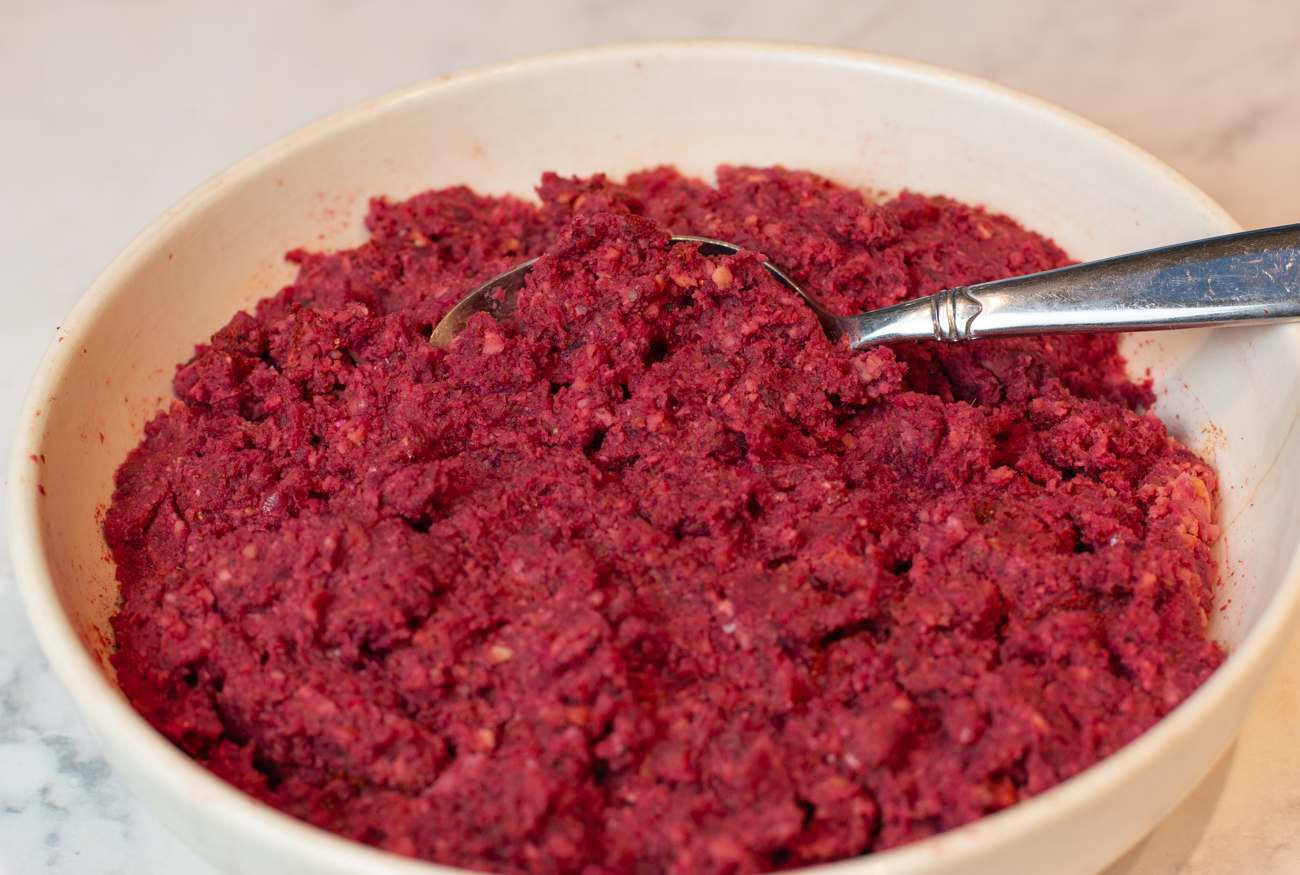
Leave some chunky texture in the mixture, should not be too fine.

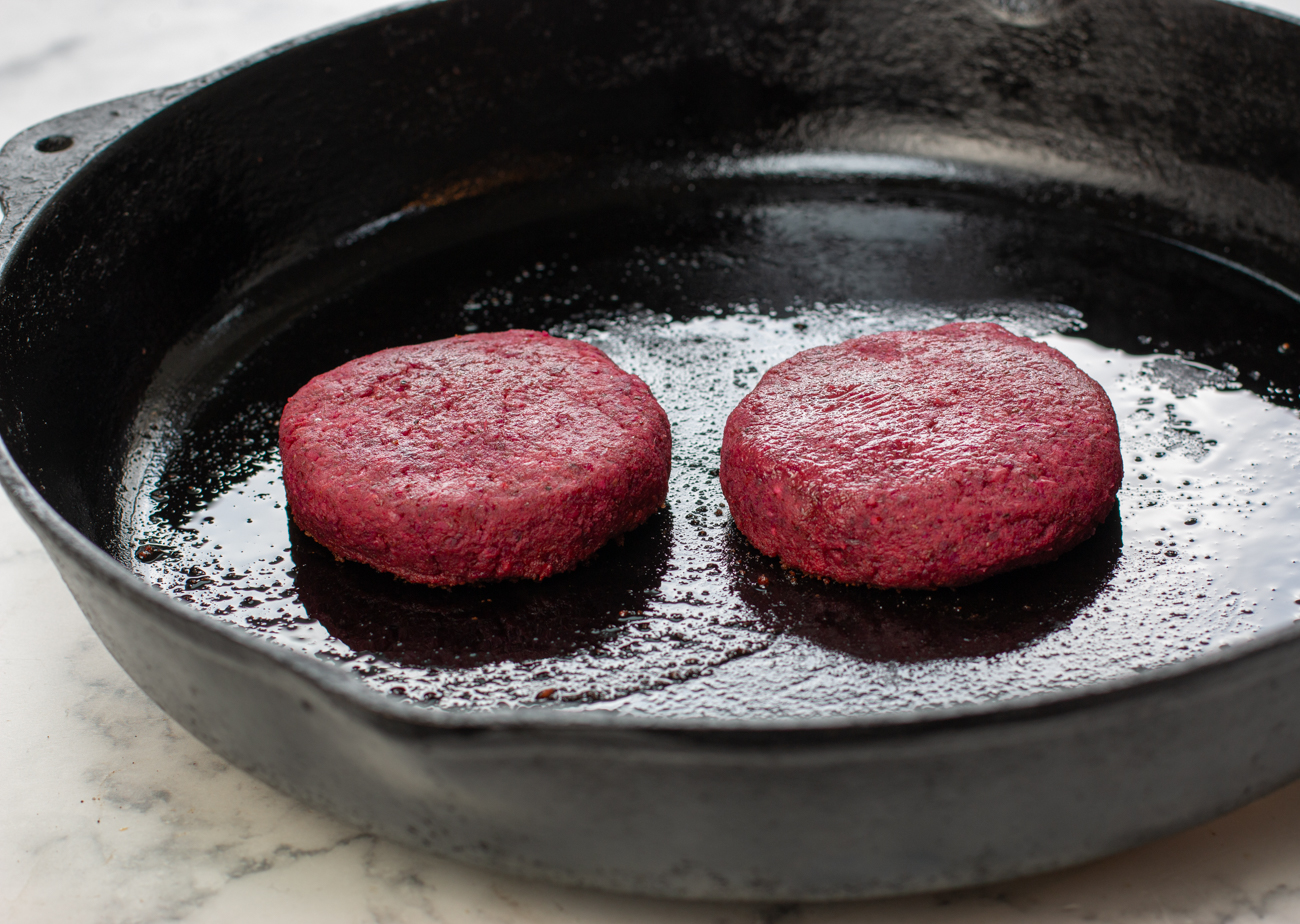
While this burger will not “bleed” like beef burgers ~ they are moist, delicious and have a reddish color that mimics raw beef color.
They will not fall apart in the cast iron pan or grill pan!
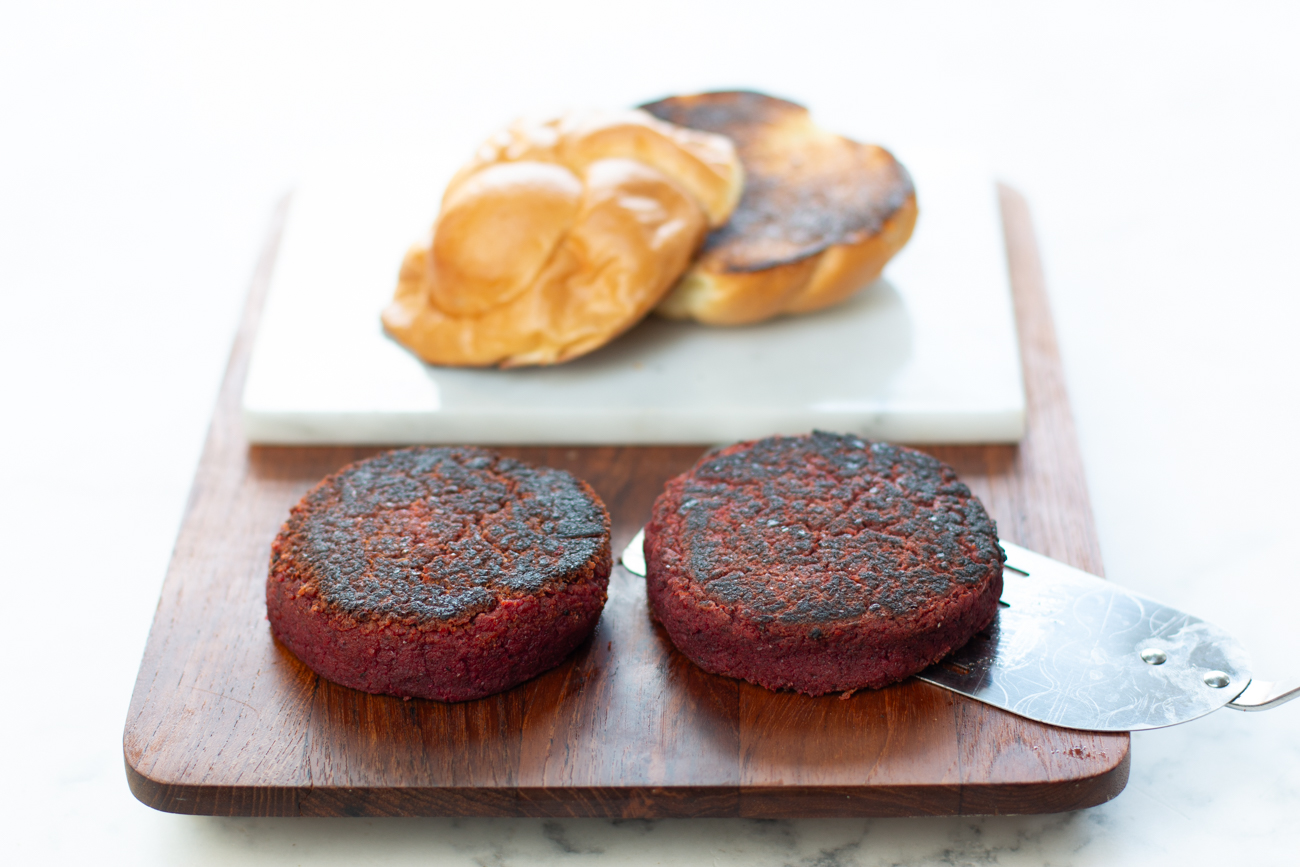
I like to Blacken the burgers! That are not scorched – but adds a nice grilled flavor to the patties.

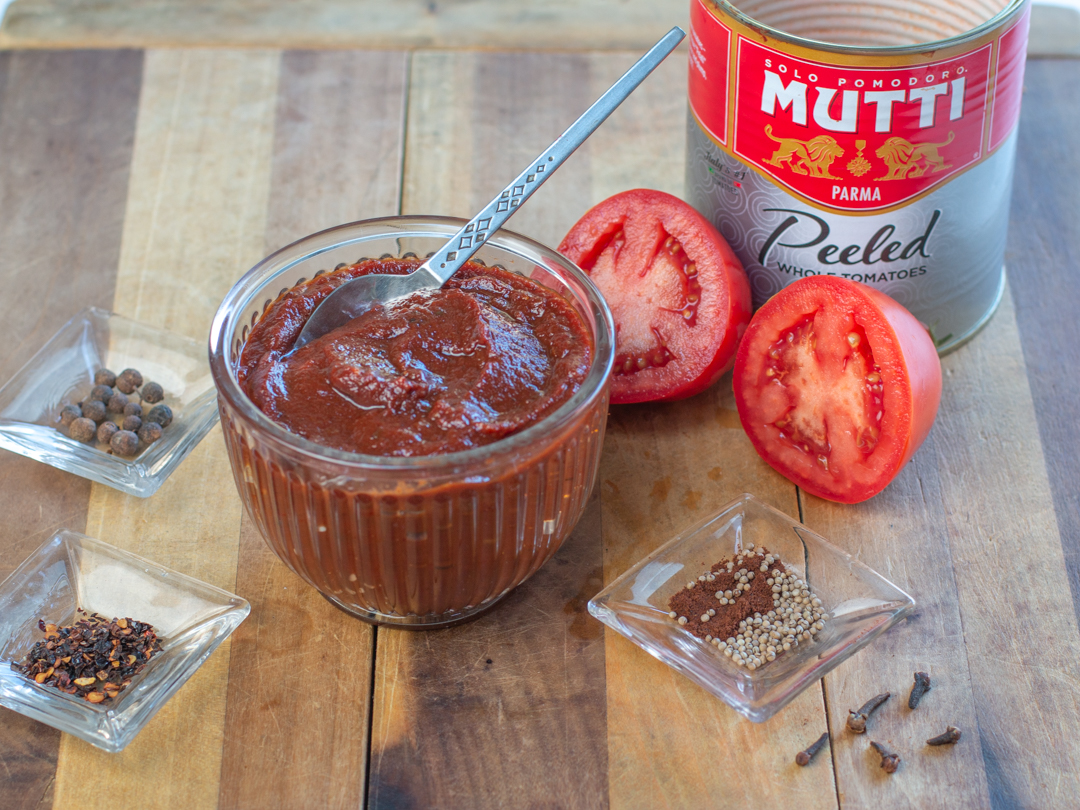
Other Topping/Sauces suggestions for the burger: (see recipes)
Karen’s Lemony Tahini Dressing
Karen’s All Natural Smokey Apricot-Tomato Barbecue Sauce
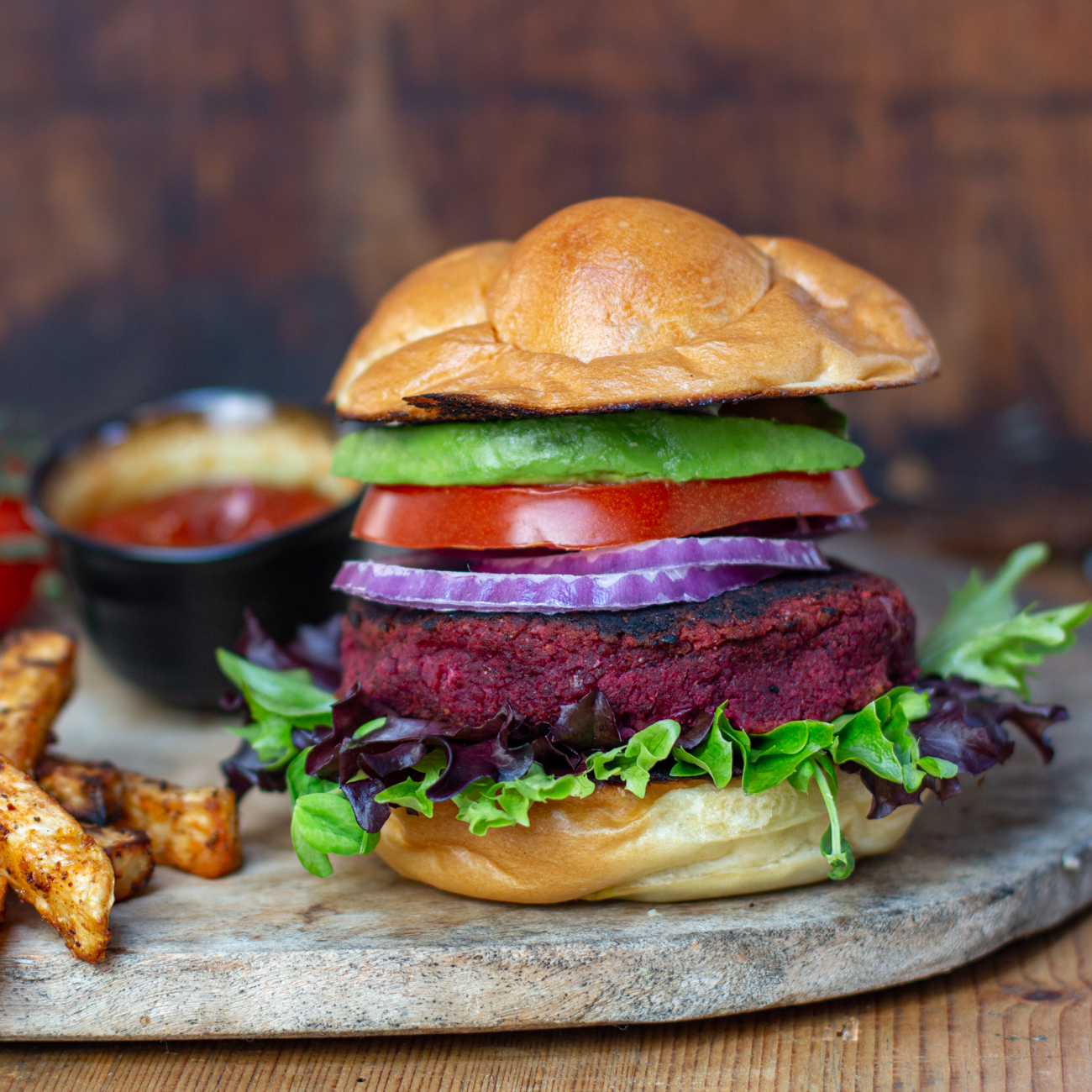
Serve these burgers with Oven Fries!
I love Celery Root Fries (pictured above) and Potato Fries with my Homemade Salt Free Sazón Cuban Seasoning (recipes coming next week!) and Sweet Potato Fries with Garlic (see recipe)
In the News; The Ugly Truth Beyond Meat:
- Unfortunately, even though an alternative to beef is better for the environment, it may not necessarily be better for your health. The Beyond Meat burger has 18 ingredients, the Impossible Burger has 21. Both are highly processed and contain several additives and inflammatory oils.
- The ugly part of the introduction of these burgers, is the marketing and deception behind them. Often, vegan, vegetarian, and gluten-free foods are associated with being healthier, which may be the case for some – but most definitely not all.
- The most exciting and positive aspect about the rise of plant-based burgers, is their impact on the environment.
Information source: Beyond Meat: The Good. The Bad. The Ugly.
But companies like Beyond Meat and Impossible Food changed the game in 2016 with their burgers made to look and taste like actual meat. These burgers were formulated by SCIENTISTS with formulations taking about 6 years to develop the appearance and color and flavor (chemical flavorings) of beef patties.
Why I will not eat Commercial Plant Based Burgers:
- See the Chemical INGREDIENTS!
- Water is the first ingredient! Which means it is the largest ingredient by volume!
- Highly processed developed by scientists – can you pronounce these ingredients?
- I DO NOT EAT FOODS WITH Natural Flavoring! These are cheat flavoring chemicals, yuck!
- “Yeast extract” is another term for MSG!
I ate a Beyond Burger once to see what it tasted like… never again!
I wholeheartedly believe we all need to eat more plants.. where are the plants in these burgers?
Impossible Burger Ingredients: |
Water, Soy Protein Concentrate, Coconut Oil, Sunflower Oil, Natural Flavors, 2% or less of: Potato Protein, Methylcellulose, Yeast Extract, Cultured Dextrose, Food Starch Modified, Soy Leghemoglobin, Salt, Mixed Tocopherols (antioxidant), Soy Protein Isolate, Vitamins and Minerals (Zinc Gluconate, Thiamine Hydrochloride (Vitamin B1), Niacin, Pyridoxine Hydrochloride (Vitamin B6), Riboflavin (Vitamin 2), Vitamin B12).
Beyond Meat Burger Ingredients:
water, pea protein isolate, expeller-pressed canola oil, refined coconut oil, contains 2% or less of the following: cellulose from bamboo, methylcellulose, potato starch, natural flavor, maltodextrin, yeast extract, salt, sunflower oil, vegetable glycerin, dried yeast, gum arabic, citrus extract (to protect quality), ascorbic acid (to maintain color), beet juice extract (for color), acetic acid, succinic acid, modified food starch, annatto (for color)
I hope you will make and enjoy these delicious plant-based burgers!
Here’s to adding more plant-based ingredients to our daily diet this year!
Let me know what you think!
Karen
If you like this recipe, SUBSCRIBE (here) to my newsletter ~ never miss a recipe!
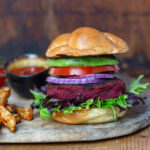
Karen's Ultimate Veggie Plant-Based Burger
Ingredients
- 1/2 cup Kasha: Roasted Buckwheat Coarse granulation, I use Wolff's
- 1/3 cup red lentils (Masoor Dal)
- 1 cup cooked chickpeas
- 4 ounces tempeh chopped 1/4" pieces
- 1 cup cooked red beets* see note chopped into 1/2" pieces, cold
- 3 teaspoons extra virgin olive oil divided
- 1/2 cup onion peeled, coarsely chopped
- 1/2 cup carrots I use purple carrots, organic
- 2 1/2 teaspoons garlic
- 3 teaspoons Smokey Chili Seasoning (see recipe; salt free)
- 1 1/2 teaspoons liquid coconut aminos*
- 4 1/2 tablespoons oat flour*
Instructions
Cook Beets:
- I cook beets the day before I make this recipe. Saves time, and I like them cold (refrigerated, not hot.)
Cook Grains:
- Cook Buckwheat: To a one quart pot add 3/4 cup water, bring to a boil, and Kasha and cover. Cook for 5 - 7 minutes until cooked and tender, remove to a bowl.Cook Lentils: Rinse lentils, add them to a small pan, and cover with 1 cup water. Cover and simmer until tender (not mushy!) about 10-12 minutes. Remove to a bowl. If you have a problem with digesting legumes and seeds, soak your Kasha and Red Lentils in water to cover overnight at room temperature, then drain, rinse and cook.
- Add 1 1/2 teaspoons evoo to a medium sized skillet. Set heat to medium- low - add onions and carrots and sauté until just softened, 10 minutes. Add chopped tempeh and one teaspoon water, stir in, cook I minute. Add 3 teaspoons of Smoky Seasonings and stir to combine, cook 1 minute.
- Add the skillet mixture to a Food Processor with the buckwheat and lentils. Also add the chopped garlic, coconut aminos and oat flour.Pulse three time to break up the mixture.
- Add the chopped cooked beets. Pulse until the burger mixture is well combined, but still had texture - not too smooth! (Pulsing is best!)
- Remove the burger mixture to a bowl, cover and refrigerate 30 minutes before cooking.
Cook the Burgers:
- Heat 1 1/2 teaspoons of EVOO in a cast iron skillet over medium- high heat. When hot - form 1/2 cups patties (I use a wide measuring cup), and add to the skillet. Let cook for 3 - 4 minutes, until the undersides are nice and blackened. Turn over, reduce heat to medium-low and cover. Cook for 4 more minutes until the bottoms have blackened and the burgers are warmed through. Burgers will firm up more as they cool a bit.Hint: Blackening gives flavor, but do not scorch.
- Serve the burgers on toasted buns of your choice. Top the burgers with barbeque sauce, ketchup or a tahini sauce.Topping ideas: Lettuce underneath; sliced red onion, tomatoes, avocado & sprouts on top.
Notes
Cooked Brown Rice can be a substitute for Kasha with a more mellow flavor.
Liquid Coconut Aminos: a dark brown sauce made by fermenting coconut palm sap with sea salt - a alternative to soy sauce and less salty; gluten free.
*Oat Flour: Ground Oats into a fine meal (I use a spice grinder.) Recipe: Karen’s Smoky Chili Seasoning & Rub
(can also use your favorite salt-free seasoning.) This recipe may not be reproduced without the consent of its author, Karen Sheer.


To say hello, discuss a recipe, share one, or have a comment - I would love to know what you think!